Eastward on the Camino de Santiago to Burgos
The Camino de Santiago and Burgos, May 28-29
We drove eastward from Santiago on roads paralleling the Camino de Santiago, the pilgrims’ route across northern Spain. Most of our travel was on freeways, but twice we opted for two-lane roads immediately adjacent to the camino, which in those sections at least was a well maintained unpaved footpath. We spotted pilgrims every two kilometers or so, a few on bikes but most hiking. This Austrian couple, who looked to be in their 70’s, told us that they had trained for the journey by hiking in their Steiermark mountains and were able to walk at least 30 km a day. At that rate it would take them 26 days to go from St. Jean-Pied-de-Port, the jumping-off place just over the French border, to Santiago. No blisters so far, they happily reported, and only a few hours of very light rain so they were two days ahead of schedule. However, unlike medieval pilgrims, they would return home by plane rather than foot.
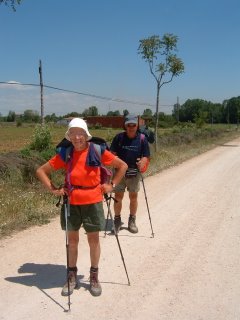
Austrian pilgrims
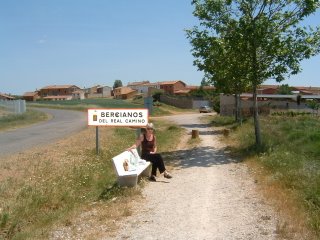
Bergianos del Real Camino
We had booked a room seven km outside of Burgos at—not to mince words—a truck stop. True, it was a Michelin-recommended truck stop with good food, but the roar of diesel motors did little for our sleep. Down the street from our lodgings was a village that seemed to be either under construction or no more than five years old. Our desk clerk confirmed that this was a new bedroom community where Burgos commuters could find a small townhouse with garage for a reasonable price. The town’s only venerable building was the church, which the sacristan was cleaning up, he explained to Georgia, in preparation for his daughter’s wedding the following weekend.
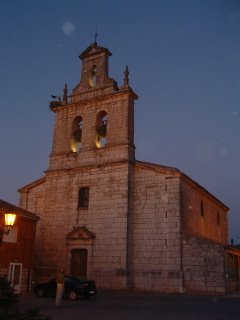
Iglesia de Villagonzalo
We started our day in Burgos by visiting the Monasterio Real de las Huelgas, which used to have so much political and economic power that medieval Spaniards said that if the Pope was obliged to marry, he would have to take the Abbess of Las Huelgas as his bride. Some 100 nuns, all from royal or noble families, each with two servants in tow, occupied the convent up to the 16th Century, when the abbess was Doña Ana of Austria, the illegitimate daughter of Charles V’s illegitimate son. The convent, which now has some 30 nuns, is strikingly large, rich and beautifully preserved.
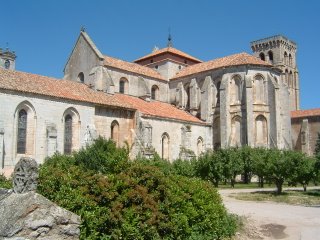
Monasterio Real de las Huelgas
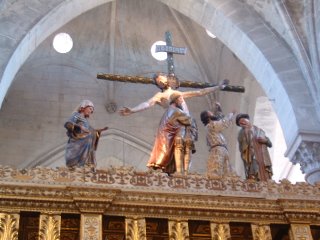
A chapel at Las Huelgas
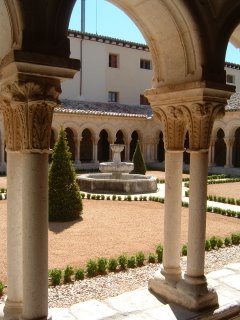
Las Huelgas cloister
While the outlying convent was a delight to visit, we were similarly impressed by the center of Burgos, which is graced by the green esplanade that runs along the Arlonzón River. However, the city’s greatest building is the cathedral, a beautiful blending of Gothic, Mudéjar and Renaissance styles. Our favorite parts were the cupola, immediately under the transept, and the Constable’s Chapel, which has perhaps the best reredos we have seen. Marked by metal cockleshells in the pavement, the Camino de Santiago runs right next to the cathedral, and the city was filled with pilgrims enjoying an R&R break.

Burgos
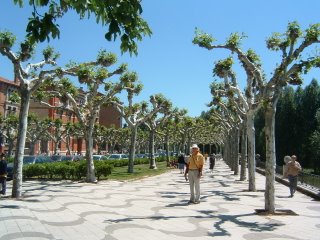
Paseo del Espolón
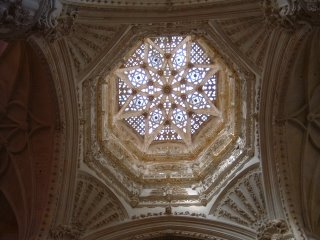
Cupola above the crossing at Burgos cathedral
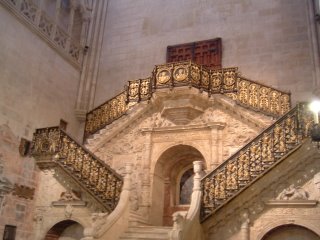
Golden Staircase
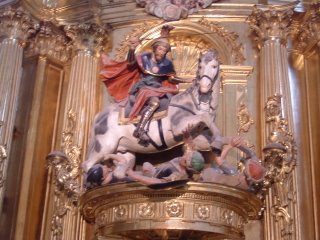
Santiago the Moor slayer (Burgos Cathedral)
A report from Burgos requires some mention of El Cid, the city’s favorite son, who is buried in the cathedral. However, the tourist brochure accounts skip over the fact that he was a mercenary who fought for Moorish princes as well as Christian before redeeming himself by dying in the Christian conquest of Valencia. You’ll recall Charlton Heston in the role before he gave up swords for rifles.
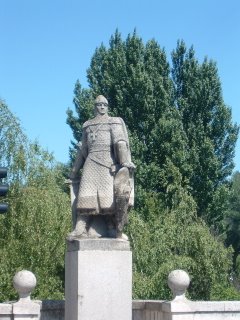
El Cid

0 Comments:
Post a Comment
<< Home